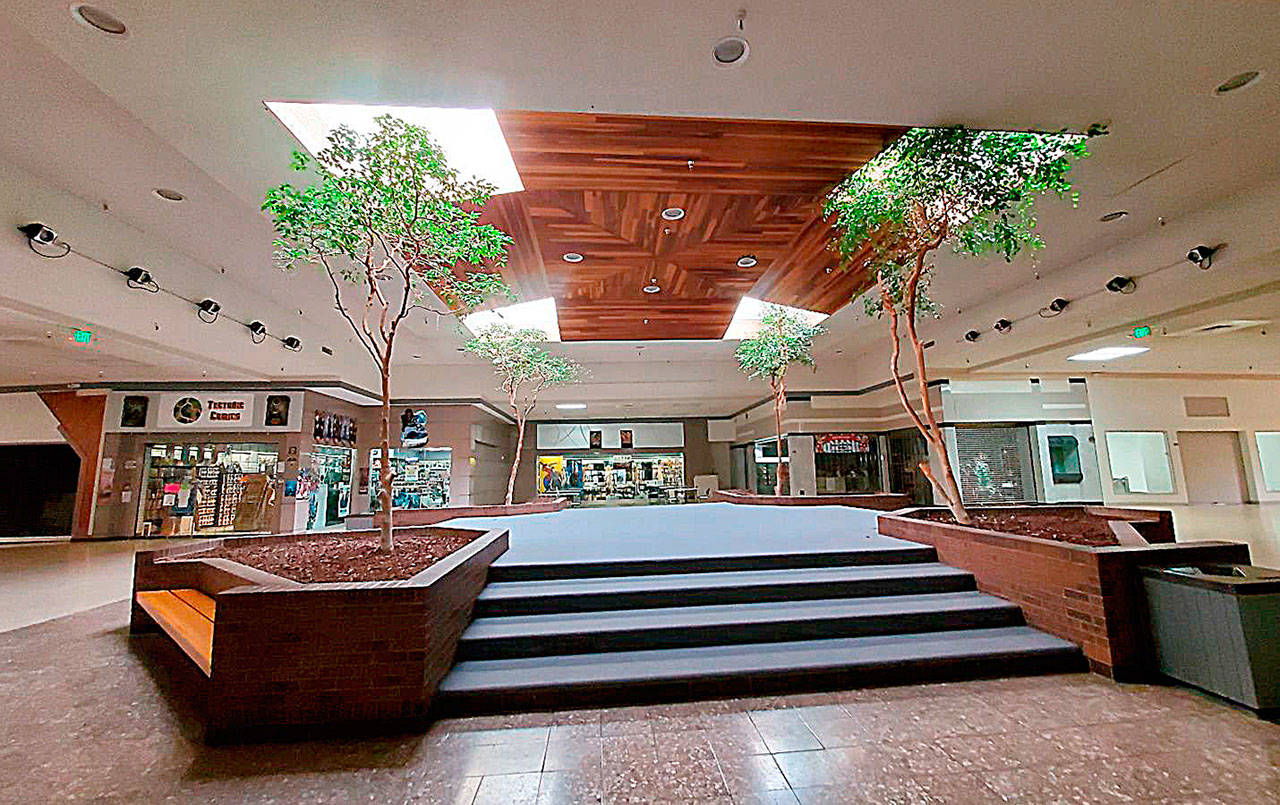An engineering firm’s report on the Shoppes at Riverside paints a distressing picture for the future of the mall, which closed Feb. 13 because of safety concerns.
Meanwhile, Coming Attractions Theatres, the mall’s owner, continues to look at ways to support the businesses displaced by the closure, said Chief Operating Officer Al Lane.
The report determined that settling soil has left large gaps between the foundation and the soil in places. “This will manifest in unpredictable structural damages, and increased risk,” read the report. “Moreover, an earthquake could trigger imminent structural failure with catastrophic consequences.”
The Extreme Fun Center (former JC Penney store) and a portion of the Riverside Cinemas were outside the scope of the engineering firm report; that’s because the roof structure is different on the Fun Center, and because a few auditoriums were added to the cinemas after the mall was originally built, Lane said.
“We’re looking into the possibility of reopening the Fun Center at some time,” said Lane, but that depends on what engineers have to say about the stability of the structure, and whether or not the space could be insured.
As for the cinemas — the lobby and restrooms and some auditoriums are part of the original mall, a few auditoriums are not. “We’re also looking to see if there are ways to shore up the cinemas to get those reopened,” said Lane. “The community has supported the cinemas, that’s why we bought the mall in the first place, to protect the cinemas.”
Coming Attractions is looking at the cost/benefit of options for the mall, said Lane, including the possibility of partial demolition while shoring up the west end of the mall, where the cinemas are located and adjacent to the more structurally sound Sears building. The vacant Sears Building was built separately from the mall and is not owned by Coming Attractions.
These are, however, just preliminary ideas on any future potential for the mall, Lane said. The company will have to study the cost of any potential improvements, make sure whatever remains can be insured and is safe for use and, in the end, whether operation would be cost-effective for the company.
The report
The report, dated March 5 by Pacific Structural and Forensic Engineers Global, obtained by The Daily World said in its conclusion, “Based on our site observations and review of available documents it is our opinion that the observed damages to the property are the result of excessive and deferential settlement of site soils which (the firm) attributes to inadequate design and/or construction of the slab and foundation system.”
It continues to state that settlement of the ground underneath the 350,000 square foot structure will continue. The soil underneath the mall is described as finely grained and saturated “and severely problematic” in the report, prone to settlement and potential liquefaction in the event of an earthquake.
In a Daily World report dated Aug. 4, 1980, just days before the then-named SouthShore Mall’s opening, contractors building the mall for General Growth Corporation—a company that at the time was building malls across the country — acknowledged the challenges of building on such ground, requiring the driving of 2,500-3,000 pilings to support the massive concrete foundation.
In the decades since the opening, the soil has settled and is no longer helping the pilings hold up the foundation.
The engineering firm surveyed about 300 locations in the common areas of the structure and measured some gaps between the floor and the soil underneath exceeding 31 inches. “This is considered excessive for a structure of this type and is consistent with the structural damages due to settlement,” read the report.
The report references an event from a few years ago that during some construction a concrete floor slab was cut, and the cut slab fell about three feet into a void below.
The firm also found altered roof slopes in several areas, which had redirected the flat roof’s drainage, resulting in the accumulation and ponding of storm water.
“This is another manifestation of severe differential structural settlement,” read the report. “This widespread differential structure settlement indicates that the foundation system was not designed and/or constructed adequately.”
The mall was closed initially Feb. 13 when cracks were observed in the ceiling.
The report states that mall manager Jasmine Dickhoff and another mall employee reported that on or around Feb. 12 they “heard a large traveling crack through the center of the mall. It sounded like it traveled a good 50 feet. “We are unsure if the sound we heard (was) from the crack, the roof or the snow and ice.”
Dickhoff, according to the report, saw multiple cracks on the wall finishes near the location of the stage area of the mall, where the sound was heard.
The engineering firm visited the site Feb. 16, 23 and 24, and observed in the interior of the mall severely sagging/deforming concrete floor slab, cracked floor tiles, dislodged/fallen suspended ceiling, cracked ceiling and walls at multiple locations, and horizontal separation at wall framing above the suspended ceiling level.
Inspection of the roof showed construction and expansion joints that were originally curved that were pulled apart horizontally, and that the roof profile had been changed in multiple areas.
The report states that the mall’s closure — tenants have until May 4 to remove their belongings – will be in place until “such time as the property’s structural integrity has been restored.” That would require Coming Attractions to hire licensed geotechnical and structural engineers to determine remedial repairs to the slab and foundation system, and all structural framing and nonstructural elements, among other requirements.
The firm recommended Coming Attractions “perform a cost benefit analysis of the implementation of the above restoration efforts versus complete demolition and reconstruction.”



